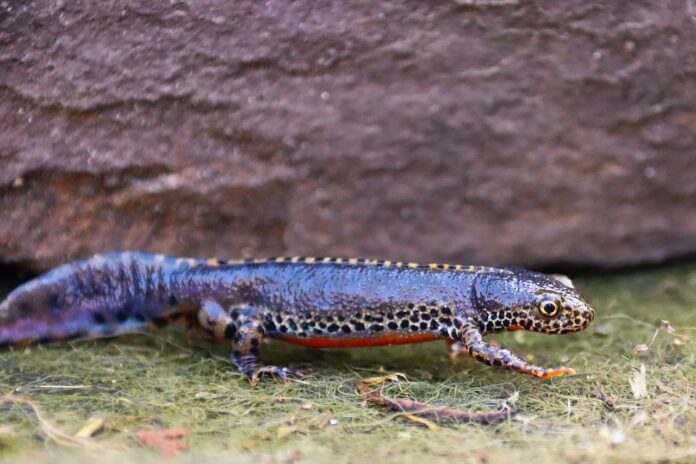Sometimes, beneath the water’s surface or on the shore among the leaves, one can spot a strange creature resembling a small dragon. But in reality, these are not mythical beings but ordinary amphibians called newts. Many people think of them as a cross between lizards and frogs because they resemble the former in appearance and have similar habits and lifestyles to the latter.
However, this opinion is mistaken: newts are not a distinct species. They are a general term for a group of amphibians that predominantly lead an aquatic life but are also capable of coming onto land.
Humans should approach newts with caution and avoid tactile contact, as they are poisonous. Although these amphibians do not pose a significant threat to life, contact with their toxins on mucous membranes or open wounds can have unpleasant consequences.
Interesting Facts About Newts:
- They are named after the ancient god Triton, the ruler of the water element. According to legend, Triton had the upper body of an ordinary human and the lower body of a fish.
- The skin color of newts changes depending on their habitat. Some camouflage themselves to blend in with the soil, while others are colored to match the surrounding vegetation. Some species have very bright colors as a warning: “Danger!”
- There is a known case where the poison of a newt proved fatal to a frog that had eaten it. The frog died, but the newt emerged from the encounter alive and unharmed.
- Preparing for the mating season, unremarkable males grow bright crests to attract the attention of females. After mating, their bodies return to their usual form and coloration.
- These amphibians have a very high regeneration level: they can regenerate not only lost limbs but also internal organs, such as heart muscle.
- Newts are carnivorous animals. However, their body structure does not allow them to chase their prey, so they mainly hunt slow-moving snails, slugs, or worms.
- Amphibians cannot stay on land for long as it leads to skin dehydration and death. However, they also cannot stay in water continuously since they breathe oxygen.
- Newts shed their skin. Some species do this 2-3 times over the summer. Immediately after shedding the old skin, the newt eats it to reclaim the beneficial substances contained in it.
Newts probably love rain the most in the world. During such weather, their activity on land increases, and they may venture much farther from their water habitat in search of food. Consequently, during heavy rain, encounters between people and these “little dragons” become much more frequent.
